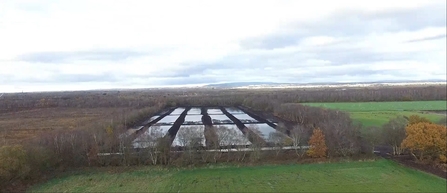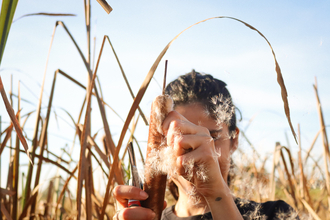Our bulrush wetter farming trial is growing a commercial crop of typha (bulrushes) on an area of re-wetted lowland agricultural peat. By re-wetting the once drained peatland we aim to reduce damaging carbon emissions and to help protect the remaining soil carbon.
To keep the land productive and financially viable for the farmer the bulrush seed heads will be used by materials science company Ponda® to create BioPuff®, a filling for padded jackets that provides a sustainable alternative to goose down or polyester.
We know that re-wetting the peat is good for the environment, but farming on wetter land poses a number of challenges, especially how do you sow the seeds?



